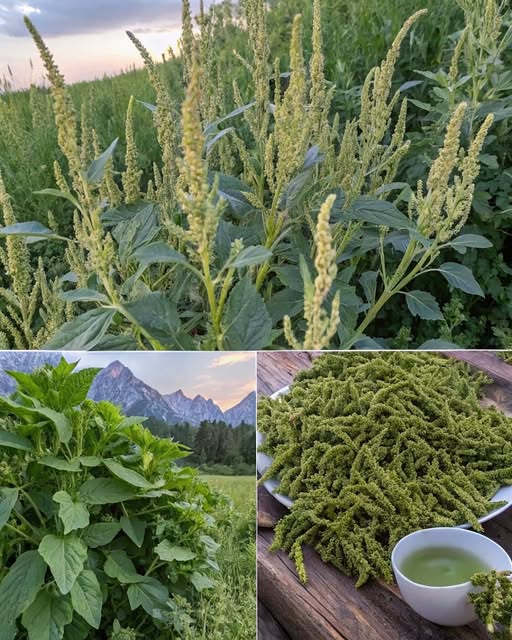Amaranthus tuberculatus, commonly known as waterhemp, is typically regarded as a weed, particularly in North America, due to its aggressive growth and resistance to herbicides. However, like many Amaranthus species, it also has some potential benefits, though these are less well-documented compared to other species like Amaranthus caudatus or Amaranthus hypochondriacus. Here’s a breakdown of possible or known benefits:
✅ Potential Benefits of Amaranthus tuberculatus
1. Soil Health and Phytoremediation
-
Waterhemp can grow in disturbed soils and may help stabilize soil and reduce erosion.
-
Like other Amaranthus species, it has potential in phytoremediation — absorbing certain heavy metals or contaminants from soil.
2. Biodiversity and Wildlife Habitat
-
Provides food for pollinators and insects, especially its flowers which attract bees.
-
Seeds may be consumed by birds and other small wildlife.
-
Can contribute to the biodiversity of certain ecosystems when not overly dominant.
3. Potential Edibility (Caution Required)
-
While not commonly used as a food source, some Amaranthus species are edible (leaves, stems, and seeds).
-
Waterhemp is not typically harvested for food, but in survival or foraging contexts, it might be consumed similarly to other amaranths — with caution due to potential nitrate accumulation or pesticide contamination.
4. Genetic Research and Crop Science
-
Waterhemp is heavily studied in agronomic and weed science due to its rapid evolution of herbicide resistance.
-
Offers valuable insights for developing better weed management strategies and understanding evolutionary biology and plant adaptation.
5. Bioindicator Species
-
Due to its sensitivity to changes in herbicide use and agricultural practices, it may serve as a bioindicator for ecosystem and farming health.
⚠️ Limitations and Risks
-
Highly invasive and aggressive in agricultural settings.
-
Herbicide-resistant biotypes cause major economic damage in corn and soybean fields.
-
Can outcompete native plants and reduce crop yields.
Summary
While Amaranthus tuberculatus is mostly a problematic weed, it still has some ecological and scientific value. If you’re interested in edible Amaranthus species for food, nutrition, or ornamental uses, you’re better off with species like:
-
Amaranthus cruentus
-
Amaranthus hypochondriacus
-
Amaranthus caudatus
